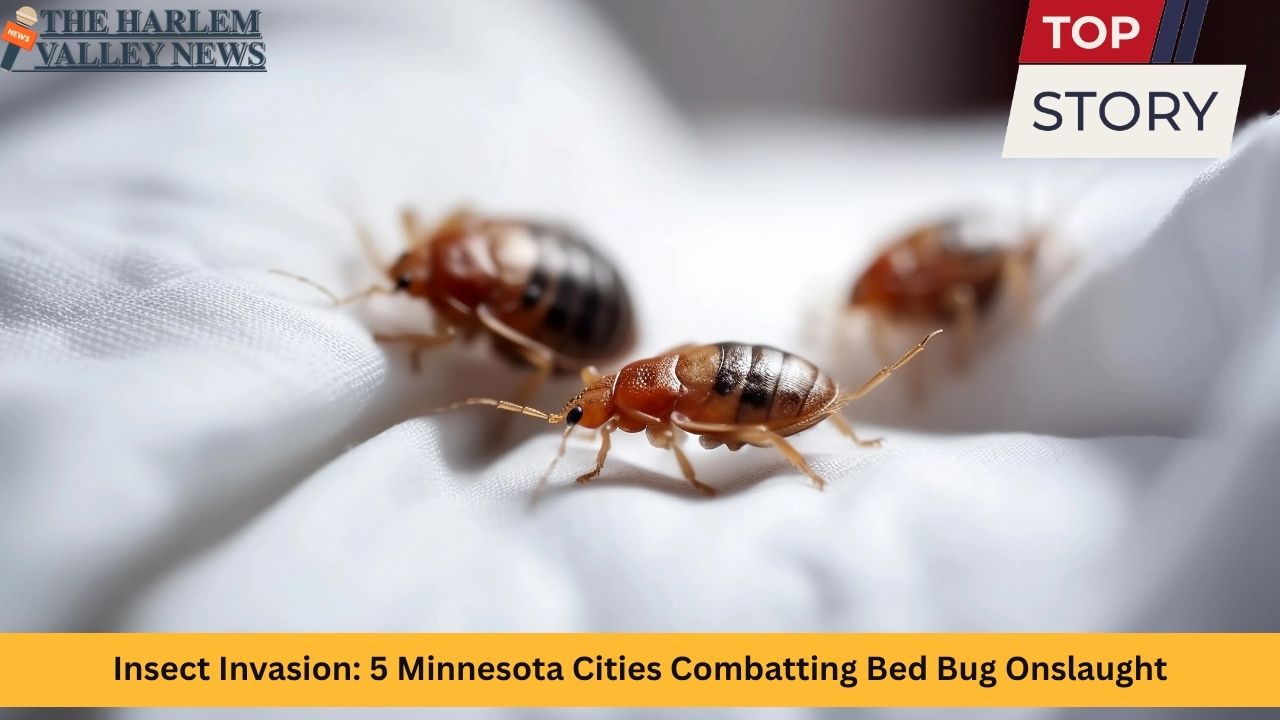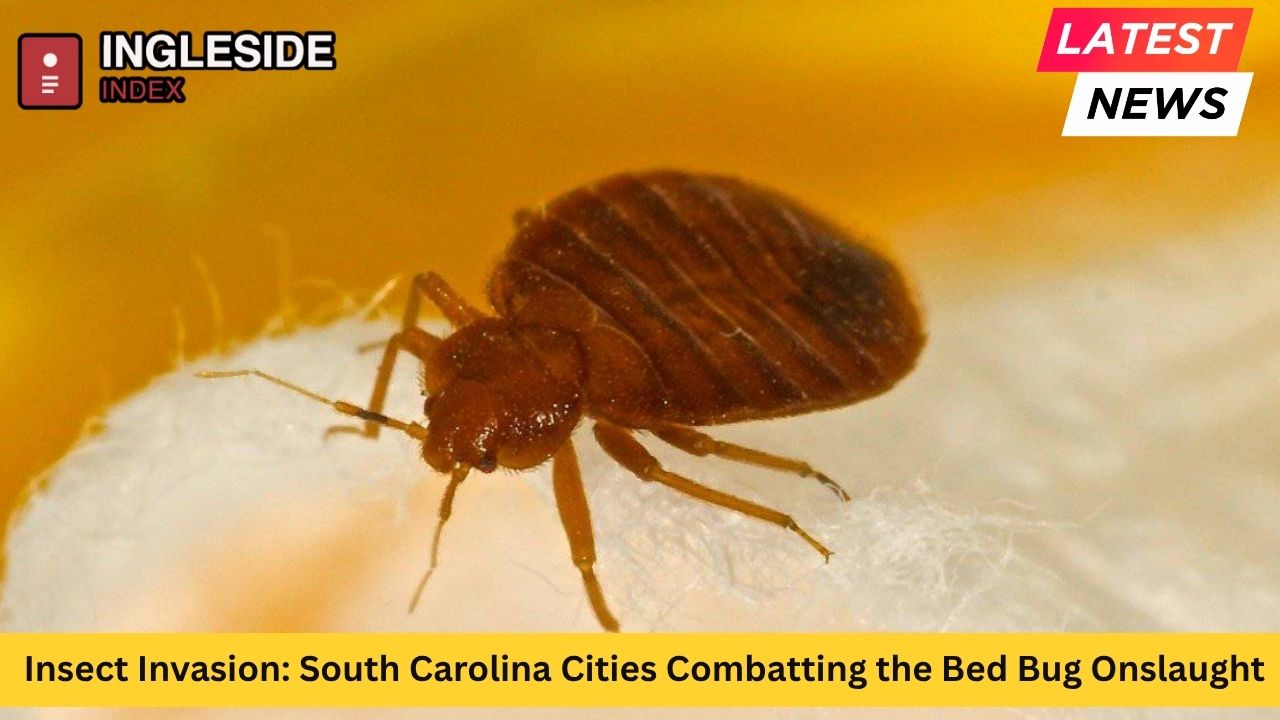Across the United States, bed bugs have evolved from a minor nuisance into a persistent urban challenge. These pests, known for their elusive nature and resistance to many common treatments, have been steadily making their presence felt in large cities and small communities alike. In Minnesota, bed bug infestations have gained special attention, with several cities on high alert. This article explores the scale of the challenge in five Minnesota cities — Minneapolis, St. Paul, Rochester, Bloomington, and Brooklyn Park — while examining community responses, prevention strategies, and what the future holds in the battle against these unwelcome intruders.
Understanding Bed Bugs: Small Insect, Big Problem
Bed bugs are parasitic insects that primarily feed on human blood, usually at night. Their flat, oval bodies and reddish-brown coloring make them difficult to detect, allowing them to hide in the smallest crevices around beds, furniture, and even behind wallpaper. While bed bugs are not known to transmit diseases, their bites can cause severe itching, rashes, allergic reactions, and psychological distress.
The Resurgence of Bed Bugs
After being nearly eradicated in the mid-20th century, bed bugs have resurged dramatically. Increased travel, pesticide resistance, and greater population density have all contributed to their comeback, particularly in urban settings. For Minnesota, the issue has grown from isolated reports to city-wide alerts, prompting health departments and pest control experts to ramp up their efforts.
Minneapolis: Leading the State’s Fight
As the largest city in Minnesota, Minneapolis has emerged as the state’s primary battleground against bed bugs. The city recently earned a spot in national rankings of the most bed bug-infested places, moving up to 40th among all U.S. cities. This uptick is part of a troubling trend as bed bug sightings and reports have steadily increased over the past decade.
The Scale of the Problem
-
Minneapolis has seen complaints rise dramatically, and now deals with hundreds of bed bug-related cases each year.
-
Infestations are especially common in densely populated neighborhoods, multi-unit apartment buildings, hotels, and public transportation hubs.
Strategies for Control
The city’s approach blends proactive inspection, public education, responsive pest control services, and collaboration with local organizations. Some of these steps include:
-
Regular inspections of shelters, hotels, and high-risk apartment buildings.
-
Educational campaigns to teach residents and landlords about detection and prompt reporting.
-
Advanced heat treatment and chemical remediation for severe infestations. Heat treatment, in particular, is a favored method, as it can eliminate all stages of bed bugs in just one session.
Community Support
Local pest control companies partner closely with the city and offer same-day inspections, weekend services, and thorough follow-up to stem newly reported outbreaks. Collaboration with organizations such as Rove Pest Control and Adam’s Pest Control has increased community engagement in identifying and eradicating infestations.
St. Paul: Stepping Up Prevention and Response
Minnesota’s capital city, St. Paul, has experienced similar challenges. Bed bug activity, especially in older housing stock and multi-family units, has necessitated a citywide approach to prevention and management.
Unique Challenges
-
The city’s age and architecture, with many older buildings, give bed bugs ample hiding spots.
-
Many residents in multi-unit buildings share common walls, making it difficult to isolate and completely treat infestations.
Uniting Against Infestations
St. Paul employs several key strategies to tackle the bed bug issue:
-
Tenant and landlord cooperation is emphasized, with clear responsibilities for timely reporting and action.
-
Free educational materials and hotlines help educate residents about identifying bed bugs and avoiding risky behaviors (such as bringing secondhand furniture into homes).
-
The city’s housing code requires owners to exterminate infestations promptly and outlines strict guidelines for prevention and follow-up.
A Public Health Perspective
While bed bugs are not considered a direct disease vector, their presence has been linked to an increase in anxiety, sleep disturbances, and secondary infections from bites. St. Paul’s Department of Health maintains ongoing communication with residents to monitor and address emerging hotspots.
Rochester: Health Hub Confronts Unexpected Insect Invaders
Rochester, internationally recognized for its cutting-edge healthcare, is not immune to the bed bug threat. The city’s high volume of visitors — patients, families, and healthcare workers — has led to greater exposure.
The Rochester Reality
-
Hotels and healthcare accommodations have experienced periodic outbreaks, leading to enhanced cleaning protocols and frequent inspections.
-
Similar to the state’s larger cities, reports surge during peak travel seasons.
Industry Collaboration
Rochester’s collaborative model brings together hotel operators, hospital facility managers, and pest control experts to share best practices. Some notable measures include:
-
Staff training on early detection (including housekeeping and laundry staff).
-
Routine inspections in hotels and medical lodgings.
-
Quarantine measures for infested items and areas.
Rochester’s response demonstrates how health and hospitality sectors can unite when faced with a shared pest problem, ensuring the comfort and safety of all guests and residents.
Bloomington: Tourist Destination Turns Defensive
As a major shopping and tourism hub — home to the Mall of America — Bloomington attracts visitors from around the globe. With travelers comes the risk of hitchhiking bed bugs, making prevention and rapid response essential.
Rising Cases and the City’s Reaction
-
The city has seen a noticeable rise in reported cases of bed bugs in hotels, apartments, and even public spaces.
-
Health officials note a direct correlation between tourist seasons and heightened reports.
Prevention Protocols
Bloomington’s focus on vigilance is evident in several fronts:
-
Hotels, motels, and rental properties are engaged in robust inspection and treatment routines.
-
Bed bug monitoring devices and on-demand pest control are now common across larger accommodations.
-
Public education campaigns target residents and especially travelers, promoting routine inspection of luggage and rooms.
Bloomington’s layered prevention model has helped minimize major outbreaks, but ongoing diligence remains a top priority as travel continues to rebound.
Brooklyn Park: Suburban Battleground for Bed Bug Control
Brooklyn Park, a diverse and rapidly growing Minneapolis suburb, faces its own set of challenges with bed bugs. Multi-family apartments and a transient population can exacerbate the problem.
Local Approach and Grassroots Solutions
-
Brooklyn Park works proactively with tenants, property managers, and local health officials to report and manage outbreaks.
-
The city has adopted an early intervention philosophy, stressing education, surveillance, and transparent communication.
Engagement and Empowerment
Efforts to educate the community include:
-
Workshops for tenants and landlords on bed bug identification and treatment.
-
Quick response teams that provide consultative advice and refer affected residents to reputable pest control.
-
Continuous updates on best practices via city newsletters and a dedicated bed bug hotline.
The city’s engagement-centric approach aims to prevent small infestations from growing into major crises, empowering the community with tools and information to act swiftly.
Why Bed Bugs Thrive in Urban and Suburban Minnesota
Bed bugs are adept survivors. Their small, flat bodies and ability to go months without feeding make them perfect urban survivors, even in the face of aggressive pest control efforts. In Minnesota, several factors contribute to their persistence:
-
High population density in urban areas enables rapid spread across apartment buildings and public places.
-
Seasonal travel peaks draw in visitors — and, sometimes, the pests — from other regions.
-
Resistance to over-the-counter pesticides complicates elimination strategies.
Tools and Tactics in the Battle
Heat Treatment
Specialized heat remediation is the gold standard for most professional pest control companies. Heating infested areas to high temperatures kills all life stages, including eggs, and delivers results in a single visit.
Integrated Pest Management (IPM)
An IPM approach blends multiple methods, such as:
-
Careful inspection and vacuuming of infested areas.
-
Use of mattress encasements and interceptors under bed legs.
-
Targeted use of insecticidal dusts (for cracks and crevices) and low-toxicity residual sprays.
-
Ongoing monitoring with sticky traps and canine detection.
Community Education
Awareness is a key weapon. Local health departments and pest experts provide materials, direct advice, and conduct outreach events to help residents recognize signs and reduce the risk of an infestation.
Stories from Minnesota Residents
Across Minnesota, individuals and families cope with the psychological and financial burden of bed bugs. Dealing with an outbreak can be distressing and even traumatizing.
-
Residents report sleepless nights, frustration, and a sense of stigma related to infestations.
-
Costs associated with professional treatments can exceed typical household budgets, especially when multiple treatments are needed.
-
Many tenants, especially in older rental units, feel caught between responsibility and lack of support.
Encouragingly, many report relief and restored peace of mind after collaborative efforts with responsive landlords and timely professional intervention.
The Role of Hotels, Landlords, and Travelers
Hotels and multi-unit property managers are the front line in recognizing and containing bed bug outbreaks. Their responsibilities include:
-
Routine room inspections between every guest.
-
Training staff to recognize early signs and respond according to a clear action plan.
-
Support for guests who report infestations, including room changes and compensation where necessary.
Travelers too play a role in preventing spread by inspecting hotel rooms, keeping luggage off floors, and washing clothing upon return from trips.
Future Trends and Innovations
The ongoing fight against bed bugs in Minnesota is prompting innovations from all corners. Some of the emerging trends and tools include:
-
Improved heat remediation systems with precise temperature control and monitoring.
-
Bed bug detection dogs with near-perfect accuracy for locating infestations.
-
Digital mapping to track citywide hot spots and allocate resources more efficiently.
-
New insecticide formulations and biological controls that exploit bed bugs’ specific biology.
Minnesota’s integrated approach — combining science, public engagement, and government oversight — serves as a model for other states wrestling with similar challenges.
Steps Residents Can Take
The best way to combat bed bugs is through vigilance and education. Here are proven steps for residents:
-
Inspect beds, couches, and furniture regularly, especially after travel or acquiring secondhand items.
-
Reduce clutter to limit hiding places.
-
Use mattress and box spring encasements.
-
Vacuum floors and furniture thoroughly.
-
Alert landlords or pest control at the first suspicion of bed bugs rather than trying to treat the problem alone.
Conclusion
Though the resurgence of bed bugs in Minneapolis, St. Paul, Rochester, Bloomington, and Brooklyn Park has presented complex challenges, it has also produced remarkable community action. Through coordinated prevention, early intervention, and shared responsibility, Minnesota cities are reclaiming their spaces from the dreaded insect invaders.
The story is far from over. Bed bugs remain a persistent urban and suburban threat, requiring constant vigilance, innovation, and support systems. By staying informed, actively participating in prevention efforts, and supporting one another, Minnesota communities have proven that even the smallest invaders can be tackled — together.
Frequently Asked Questions
Are bed bugs only found in dirty homes?
No. Bed bugs can infest any home or building, regardless of cleanliness. They are transported mainly through luggage, used furniture, and on clothing.
Can I get rid of bed bugs on my own?
While small infestations may sometimes be managed with diligent cleaning and over-the-counter products, professional heat treatment is often necessary for larger or persistent outbreaks.
Do bed bugs transmit diseases?
There is no evidence that bed bugs transmit human diseases, but their bites can cause allergic reactions and secondary infections from scratching.
Residents of Minnesota’s most affected cities continue to combat the bed bug onslaught with determination, knowledge, and the enduring belief that a pest-free environment is possible for everyone.













Leave a Reply